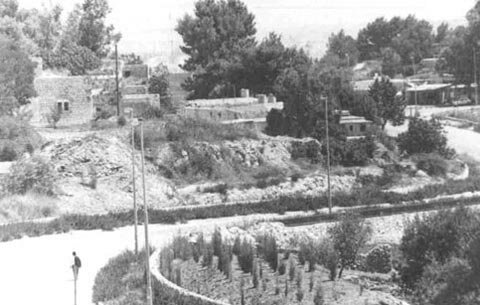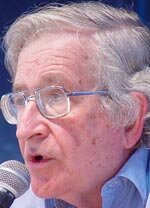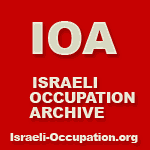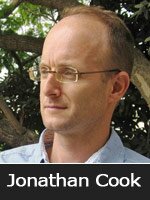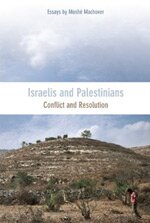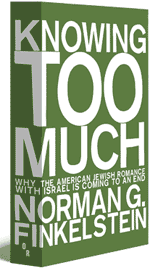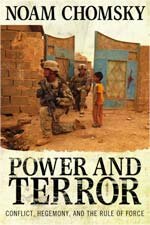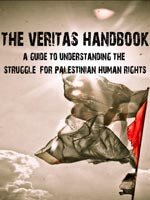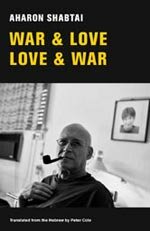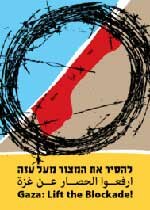In recent years, interest in the pre-state Revisionist underground movements has grown among West Bank settlement youth. These young people want to give the nationalist Lehi and Etzel (Irgun Zvai Leumi) movements a more prominent role in Zionist history and aggrandize figures who sacrificed themselves for the Land of Israel.
IOA Editor: There is a natural continuity between Israel’s pre-state right-wing terrorist organizations and today’s settlers who are sometime the very same individuals, their children, or followers. The “Lehi” (“Stern-Gang”) and “Etzel” (“Irgun”) mentioned here are best known for their 1948 war crime of the Deir Yassin massacre, which played a key role in the ethnic-cleansing of Palestine that followed.
By Chaim Levinson, Haaretz – 30 July 2010
www.haaretz.com/print-edition/news/pre-state-jewish-undergrounds-enjoy-a-renaissance-among-settlers-1.304883
Dozens of people crowded into Tel Aviv’s Jabotinsky Museum last week to celebrate the 130th birthday of Ze’ev Jabotinsky, founder of the Revisionist Movement. The evening culminated with a ceremony in which prizes were awarded to high school and college students and academics for work in the spirit of Jabotinsky.
In recent years, interest in the pre-state Revisionist underground movements has grown among West Bank settlement youth. These young people want to give the nationalist Lehi and Etzel (Irgun Zvai Leumi) movements a more prominent role in Zionist history and aggrandize figures who sacrificed themselves for the Land of Israel.
Oved Federman, 15, son of radical religious right-wing settler Noam Federman, won second prize for his film about Yehiel Dresner, an Etzel militant executed by the British Mandate authorities in 1947.
Noam Federman said he is raising his children on the deeds of the rightist underground movements.
“Oved chose Dresner because he went to the gallows under an assumed name, did not reveal his real name and was buried under an alias,” Federman said. “His tombstone was only replaced after the State of Israel was established.”
“My father’s father was an Etzel fighter,” he continued. “At home, at Friday night dinners, we talk about Etzel operations and sing underground songs. I see a connection between the underground members and our generation. Both gave their lives for the Land of Israel and the Bible. [Lehi founder Avraham] ‘Yair’ Stern’s beliefs have a lot in common with our own.”
Federman said he is asked to give lectures about prestate underground activists who were executed under the British Mandate.
Asked whether the real common denominator between himself and these prestate undergrounds was violence against Arabs, Federman replied, “hitting the enemy is not a bad thing.”
Hodaya Akrish and Na’ama Asher won a prize for their project on prestate underground members sent to the gallows by the British Mandate authorities. Shira Kadmon and Shifra Ganiram, both from the militant girls school in Ma’aleh Levona in the West Bank, won a prize for a paper on the Tuvia Chen-Zion group, which split from Lehi.
Kadmon, from the Maon settlement, said she could see the similarity between the underground members and today’s youth.
“The underground movements were a very small group of people who opposed everything accepted in that period,” she said. “They’re like us in a way … We’re trying to do something that will make a difference and advance redemption.”
Their paper was written as a matriculation project in Land of Israel studies.
“It’s a group led by Tuvia Chen-Zion that quit Lehi and went underground after a few failed operations,” Kadmon said. “It was a [religiously] traditional group.”
“The issue of the underground movements always spoke to me,” she added. “They didn’t agree with what was happening and did something. They didn’t wait for David Ben-Gurion,” who led the mainstream Jewish community.
Alex Ostrovsky, 24, of the settlement of Eli, teaches settler youth about the underground movements and their ideology.
“There is always something to learn from the past so that we don’t repeat the mistakes in the future,” he said. “I learned, for example, that perhaps Yair [Stern] shouldn’t have reached an agreement with the Nazis. The relentless, uncompromising struggle for things you believe in, including personal sacrifice, that’s what we must learn from him. He is an example of a man who sacrificed for the public and was finally killed so that we would all be better off.”
“The youth are very interested in these subjects,” he added. “Every year the number of youngsters coming to Yair’s memorial and other events increases. Many young people, who know I deal with these matters, ask me questions [and] want to learn the underground movements’ songs. Some of them identify with these things. It says a lot about the situation in Israel today that a certain percentage of the youth feels the state is no longer theirs. They feel cut off.
Links to Wikipedia added by IOA
